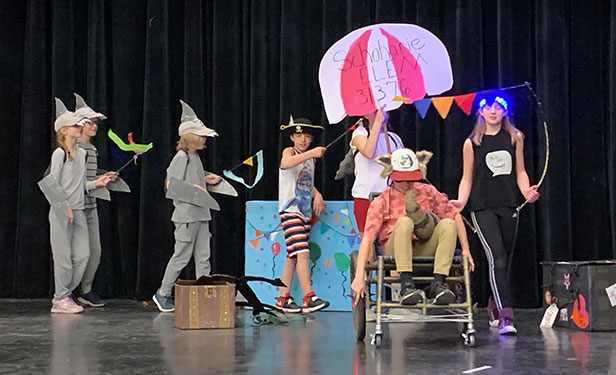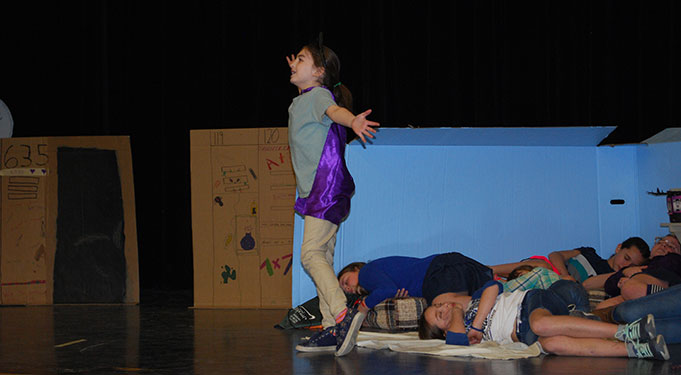
A team of Schoharie Central School District students placed 5th in New York State at a March 23 Odyssey of the Mind Competition at the University at Binghamton.
The team performed their winning skit in the auditorium during the elementary school’s monthly Schoharie Celebration assembly on March 27. Members of the Division I, Problem # 1 team included seven students in grades 3-5: Olivia Borst, Ephraim Crocoll, Noah Florussen, Rylen McBride, Emma Robert, Caitlin Saddlemire and Logan Schrader. The team was coached by Nichole McBride.
The team won 5th in the state in the following event:
Problem 1: OMER to the Rescue, Again
Who better to help those in distress than OMER? In this problem, OMER and his trusty Sidekick travel to different places with suitcases holding all of the parts of an OMER-mobile vehicle! OMER and his Sidekick will assemble and ride on the vehicle where it will function in different ways to “save the day.” Between attempts, the vehicle will be disassembled, put back into the suitcases, and taken to a different area where it will be reassembled and driven again. Finally, the OMER-mobile is thrown a hero’s parade as a show of appreciation!
Odyssey of the Mind is a creative problem solving competition for students of all ages. Teams of five to seven students select a problem, create a solution and then present their solution in a competition against other teams working on the same problem (in the same grade level division). Each year, competitions take place at the local level, state level and the international level.
Schoharie Central School District sent seven teams to a March 2 regional competition at Shenendehowa High School, including three Primary teams (grades K-2), three Division I teams (grades 3-5) and one Division II team (grades 6-8).
Also performing at the Schoharie Celebration will be Odyssey Regionals competitors and Division I, Problem 5 team of Olivia Courtright, Kaycee DeJong, Skylar Griffin, Olive Maland, Alaina Martin, Sophia Rehberg and Madison Spencer.
Their event, called Opposites Distract, was described as follows:
Disagreements can distract groups from seeing the bigger picture. Teams will create and present a humorous performance about a sneaky character that distracts others while trying to take control of anything the team wishes. In the performance it will lure others into silly arguments and be successful two times. The arguments will be presented using different dramatic styles and will include attention-getting effects. In the end, the groups will learn that they have been intentionally distracted and will catch the sneaky character before it takes control.

